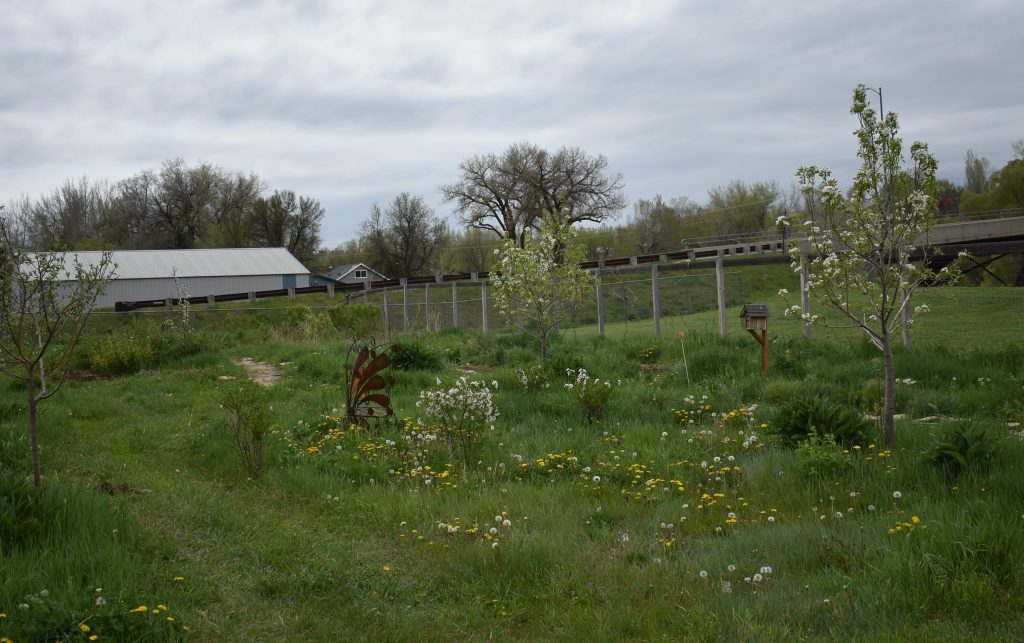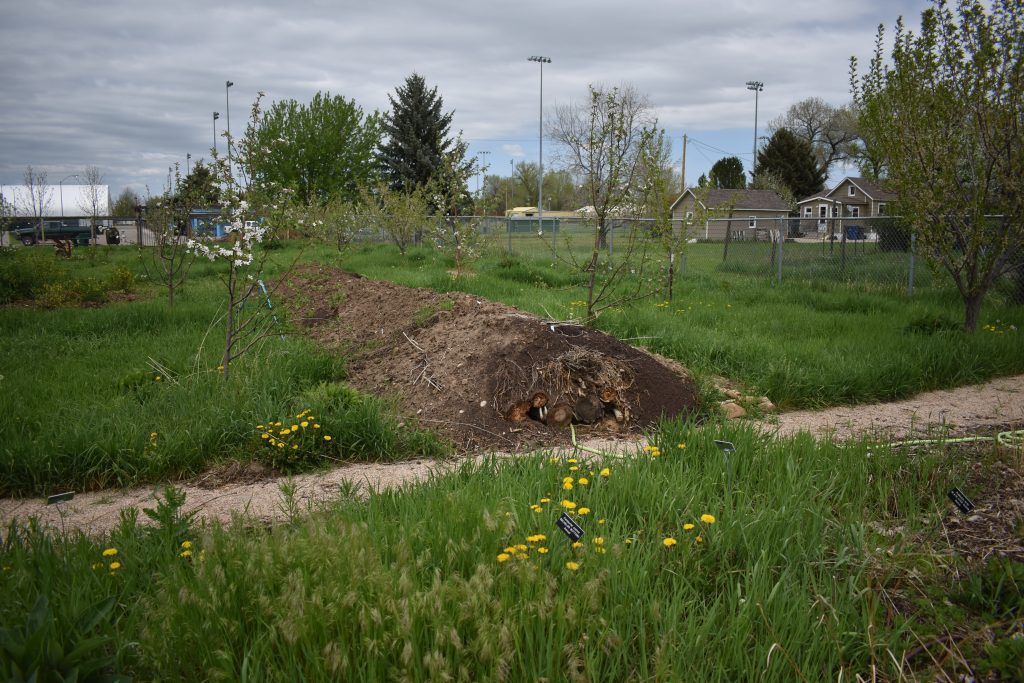alt
Sheridan Food Forest: A place to Forage

Carol LeResche, member of the Food Forest Committee, in an interview on May 20, discusses the Sheridan Food Forest.
The Sheridan Food Forest, located in the Thorne-Rider Park, was created in 2016 to create open spaces and to provide fresh fruits and vegetables to the public.
Food forests are designed to mimic a woodland ecosystem in structure, however, fruiting trees and bushes, perennial vegetables, and herbs are substituted as the usual plantings. Food Forests are places where volunteers plant and care for fruiting bearing plants that the entire community can enjoy.

A food forest is a place in which the different, balanced components produce food. When humans understand how nature creates its ecosystem, we can model that with productive species to produce food sustainably, with minimum inputs for maximum outputs.
“A first we had trouble with the state of the soil, it was a bmx park, so we are working on getting it better. 16 tons of compose here. We had mustard, Queen Anne’s lace. You could walk through the gate and disappear into the mustard.”
When asked where LeResche got the idea for the food forest, she had this to say, “My husband read an article about a food forest in Seattle, and I thought, we have community gardens, but we didn’t have a place where people could get fruit. In community gardens. people rent a space, and grow their own garden. In food forests we grow and take care of the food, and people can just come a get food. In this food forest people don’t have to pay, but they can come in gather food. People can forge for whatever is in season.”
Pointing to a cultivated bed, LeResche said, “We have garlic there, and the asparagus is over here. Later there will plums, cherries, raspberry, currents, and apricots. Trees that grow in Wyoming.”
At present, LeResche said they didn’t know how many people are coming into the forest to harvest food, but they plan to have a protected area with maybe a clipboard where people can write their name and comments, and they will have an idea of how many people have been there.

Food Forest Entrance
Members of the Sheridan Food Forest Committee volunteer, and they have a schedule of work. For those who are worried about healthy eating, the food forest plants are organically grown, no herbicides of pesticides, so people can be assured that what they eat is organically grown.
The food forest creates an edible landscape that increases access to nutritious and local food and beautify our community.
It also provides a habitat for beneficial insects. Even though the flowering trees and plants offer feed for native bees and other pollinators. Bees, a major pollinator of crops, are in decline worldwide, due to habitat loss and pesticide use. Pointing to a small plot with labeled plants, LeResche said, “The plants for pollinators are labeled, Many are native, some are asters and goldenrod. One thing we did when we got the grant money, we had to count the bees. We have a protocol set up to count the bees, and I believe there were about 57 native bees at our spring count.”
“This is interesting,” LeResche said, indicating a large mound in the middle of the forest. “This big lump of stuff is a Hugelkultur’” She elaborated on it’s purpose. “It is a way to get rid of debris, on the bottom is tree stumps, carbon items, leaves straw wood, debris, nitrogen items, like horse manure. Then we put compose over that. It’s a method of imitating the natural establishment of the thick, rich litter soil found in mature forests. It involves a trench, which is filled with log ends, then branches, wood chips, straw and leaves, horse manure and compost. Then we plant it full of vegetables, green beans, carrots, kale, squash, and other vegetables. People can come in and pick the food.”
Many annual crops and perennial berries will benefit as the substrate decomposes and increases in fertility, in this environment that stores water and becomes more and more fertile over the years.

Across from the ‘Hugekulture’ is the ‘Wyoming’ thicket, which consists of plum, serviceberry and chokecherry. “We use cardboard, leaves and wood chips to choke out the grass,” LeResche explained. “Also, you have to water just the plants, not sprinkle everything.”
The spring is clean-up time, and volunteers are are trying to get rid of all the grasses. The Sheridan Food Forest committee also works closely with the Powder River Basin Resource Council and other groups in the area.
What meal would be complete without seasoning? The forest also has garlic, and several other herbs to add flavor to one’s food.
Food is the main item in the forest, but it can also be a place to meditate and relax. There is a whimsical butterfly bench in the children’s garden, and cherry bushes are planted around it. “These will get about 10 feet tall, it will be a secret reading place for kids.” LeResche said.

“There is a difference of opinion between our members who want wild or manicured. We have to meet in the middle.
“If anyone wants to come down and get involved in the food forest that would be great.” LaResche added.

